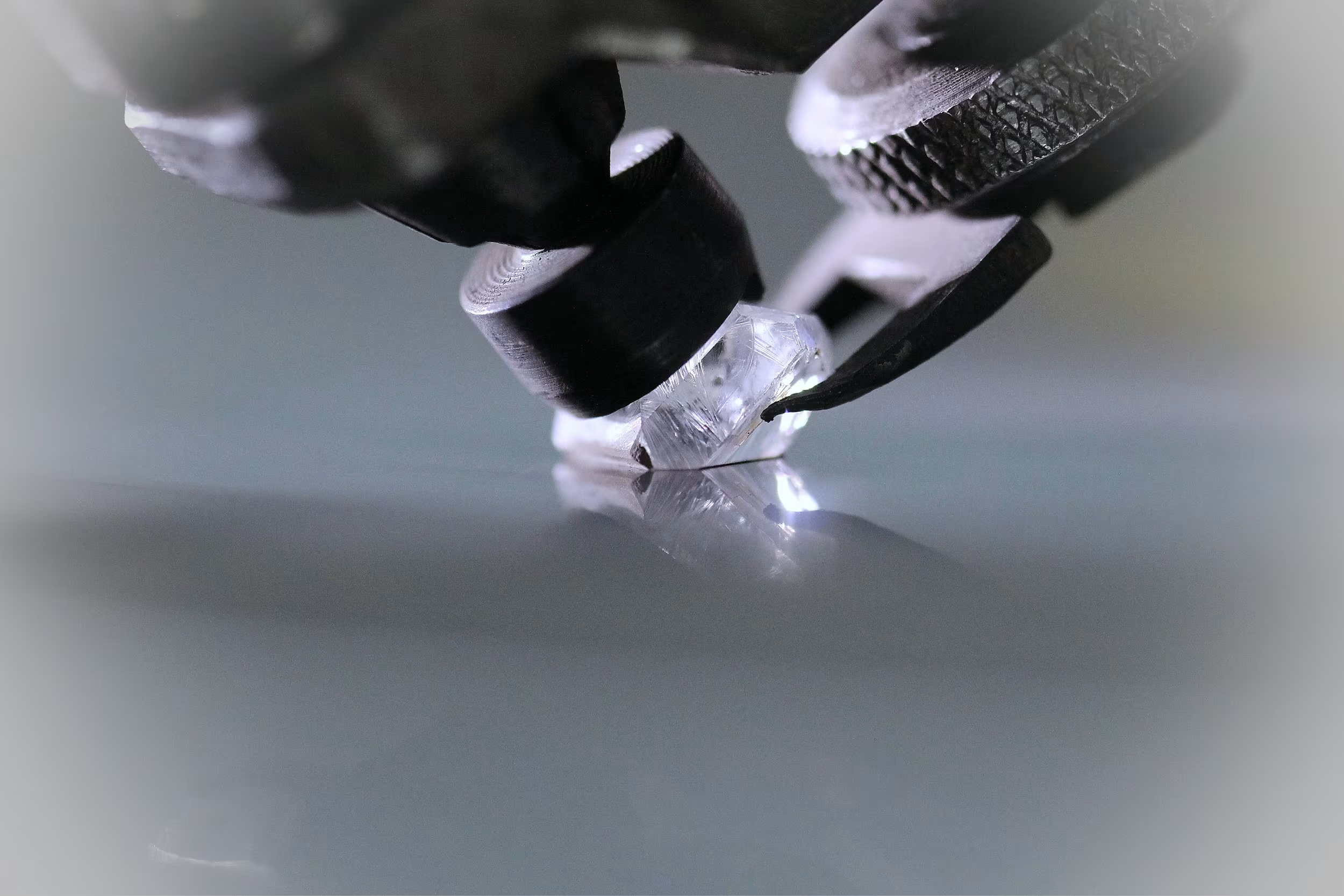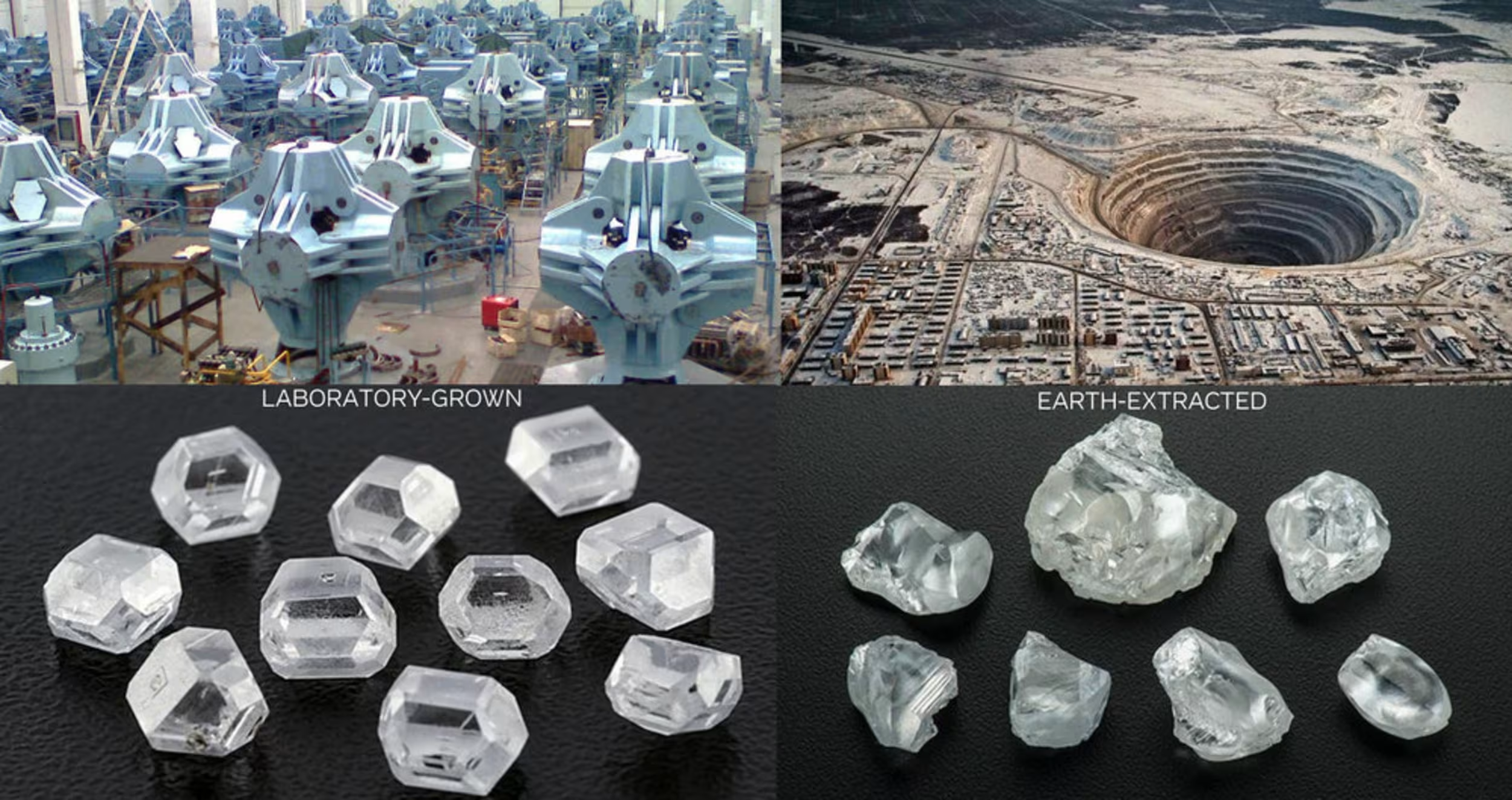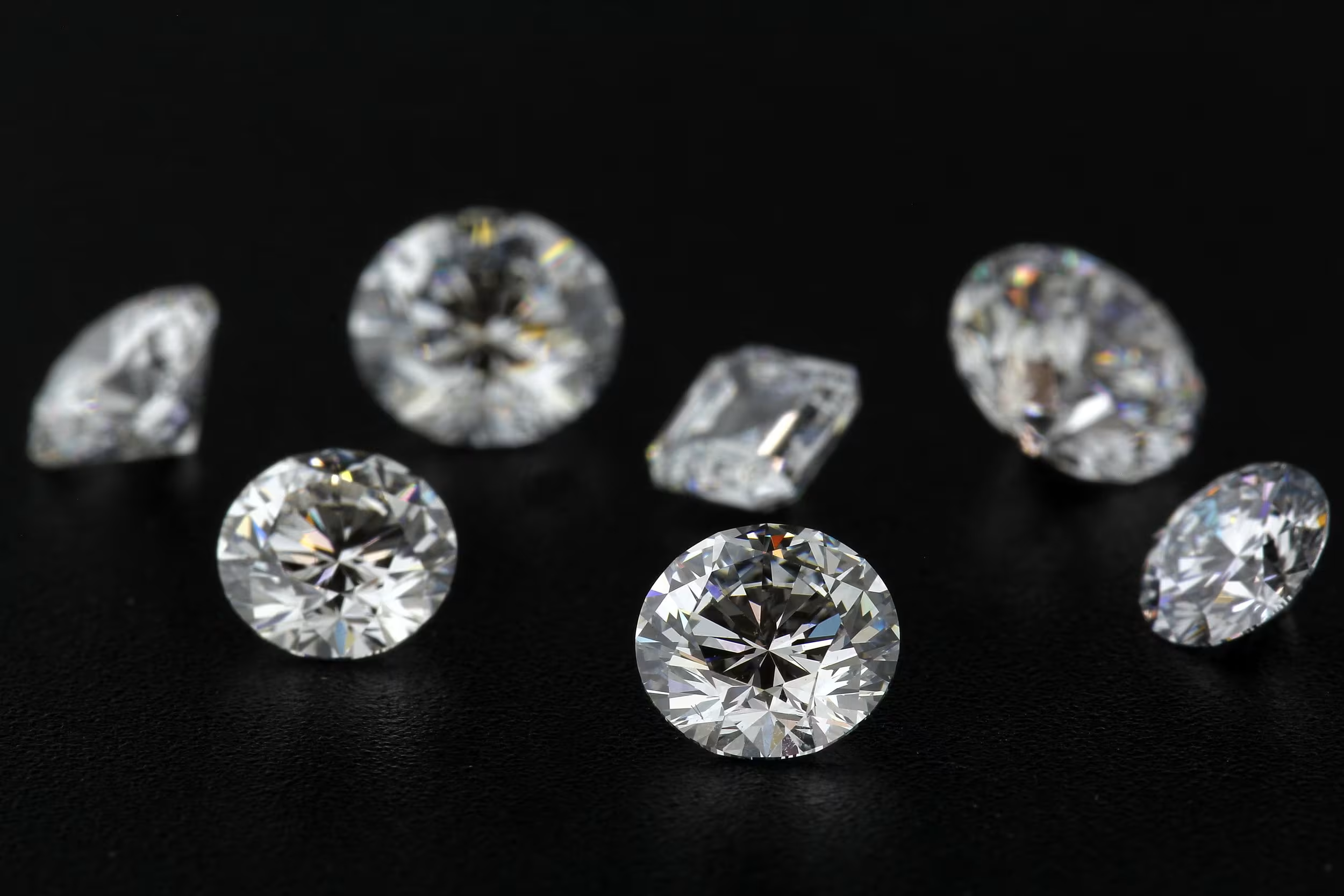
What are Lab Diamonds?
A Paragon of Human Achievement
Lab diamonds have the same crystal structure as mined diamonds: carbon atoms arranged in a cubic crystal structure. High quality lab diamonds have the same optical and physical properties as natural diamonds.
Because the growth process is similar to natural diamond growth, there are still variations in color and clarity of lab created diamonds. In other words, not all lab grown diamonds are colorless and flawless. Man-made diamonds are graded on the exact same criteria as mined diamonds (the Four Cs), by the same independent gemological laboratories that grade earth-extracted diamonds.
Unlike cheap diamond simulants, such as cubic zirconia and moissanite, lab diamonds offered by Ada Diamonds have indistinguishable brilliance, scintillation, flash, and fire when compared to mined diamonds. Trained gemologists cannot tell the difference between our diamonds and natural diamonds without specialized laboratory equipment.

Ada Diamonds proudly offers only laboratory-grown diamonds in our fine jewelry. Compared to mined diamonds, our sustainably cultured diamonds have fewer impurities and fewer defects. This makes our diamonds whiter, brighter, and stronger than the vast majority of mined diamonds.

HOW IS A DIAMOND GROWN?
By Replicating the Conditions Within the Earth in Which Carbon Crystallizes into Diamond
The ability to grow diamonds is one of the most precise and difficult manufacturing techniques that humans have ever achieved. It took almost 60 years of effort to develop the precision to grow gemstone quality diamonds.
Today, there are two methods of growing diamond gemstones: High Pressure-High Temperature (HPHT) & Chemical Vapor Deposition (CVD). Each process is best suited for certain sizes & colors of diamonds.
